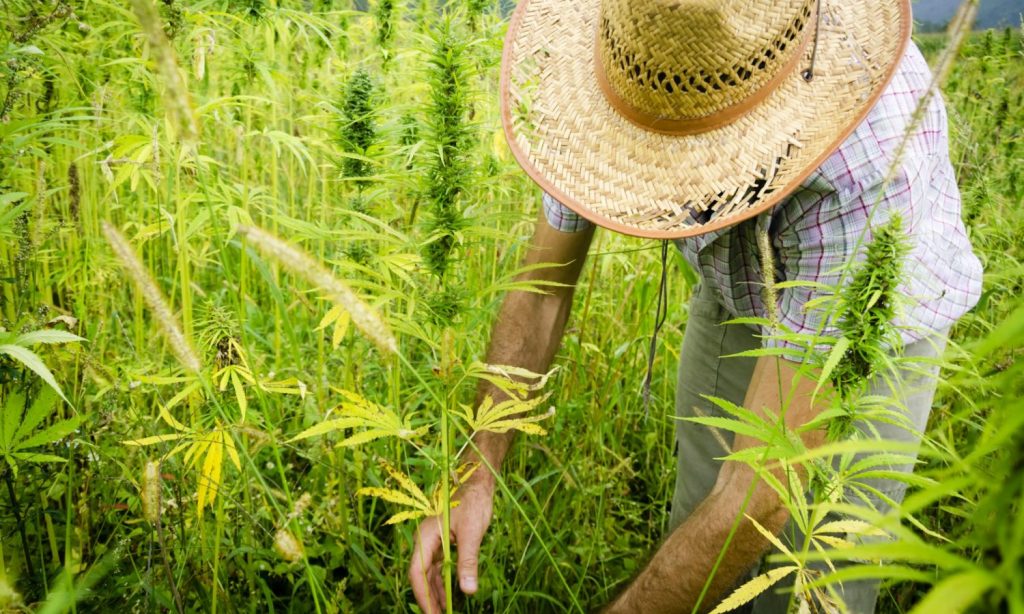
Hemp farmers give up as prices continue to fall
As hemp prices continue to fall, farmers are leaving. When the 2018 Farm Bill was passed, farmers were excited about the opportunity to grow hemp legally. Visions of massive demand for CBD products prompted farmers to plant thousands of acres.
In fact, it seemed like a surefire thing. Seemingly overnight, numerous products on retailer shelves had a version containing CBD. Body products, foods, and supplements all touted the benefits of adding CBD. Then it all fell apart as several problems came together to crash the market.
Issues ranged from a lack of FDA guidance, falling prices, lower than expected demand for CBD, weather-related issues, and a pandemic. The plants grown in 2019 led to an oversupply of biomass that continues to this day. Farmers who could not earn any money left the farm and only left the really committed ones behind.
Photo by Tinnakorn Jorruang / Getty Images
Price crash
The oversupply of biomass caused prices to fall as the market worked its way through supply. The last August report by Hemp Benchmarks wrote, “CBG biomass and extracted CBG products also saw a further drop in wholesale prices this month. In terms of raw CBD oil, hemp benchmarks watched USDA certified organic and THC-free products which helped prop up some of the category’s spot price, but the crude oil price estimated this month saw an overall decline due to an increase in the Frequency of reported deals that are less than $ 100 per pound. ”Indoor CBD flower is down 3% from July, greenhouse CBD flower is down 5% from July, and only outdoor CBD flower is down. According to benchmarks data, flowers recorded a price increase of 7% compared to July.
An example of the drastic drop in prices comes from North Dakota, where Veronica Michael told the hemp benchmark, “When we first started mining” [in the spring of 2019], Crude oil was around $ 1,400 [per kilogram], “She recalled.” I’ve had a call from two buyers in the past two weeks. One was in Colorado and one in Washington. Both were selling for between $ 80 and $ 120 [per kilogram] for raw. That is ridiculously low. Even with distillates and isolates, the numbers are not good. People want to buy distillates and isolates for less than we can make them unless you’re a really big producer. That makes me nervous and I’m afraid of the future. “
Leave peasants
Hemp benchmarks reported that there were 10,881 hemp cultivation licenses issued nationwide for the 2021 season, 45% fewer than the 19,799 hemp cultivation licenses documented in 2020. Brett Eaton, CEO and founder of Green Cherry Organics in Fort Collins, Colorado, told Hemp Benchmarks that “24” of the 28 hemp farmers he works with regularly are not growing any hemp this year. Eaton’s company created the first USDA certified organic hemp greenhouse in the United States. It also sells its CBD products and clones nationally and works with hemp farmers in 11 different states. “
RELATED: Delta-8, Smokable Flower Saves Hemp Farmers
Since no one could buy the hemp or the prices were so low that it did not cover growing costs, many farmers returned to more traditional crops, the prices of which have increased. Corn and wheat crops hit by droughts hit a three-month high. The droughts in some areas contrast with excessively heavy rainfall in other areas. The market has also seen a shift in where hemp is grown. The hemp acreage in Colorado has decreased from 2020 to 2021, while Texas and Illinois have increased planting dramatically. Oregon, which was a large state for hemp farmers, sees those acres facing criticism that the hemp plantations mask the actual illegal THC-high cannabis cultivation.

outlook
The outlook remains challenging for the time being. Many of the farmers quoted in the August Hemp Benchmark Report said the market could rebound if the FDA resolved issues related to hemp regulations. However, the FDA appears to be returning to Congress and will not take a position. Nobody can do anything about the weather or the forced quarantine problems of the pandemic. The industry could be helped by some consolidation, but that doesn’t seem to be the case. The THC side of the cannabis industry is inundated with M&A deals, but the hemp side has just seen company closings as opposed to acquisitions or mergers.
RELATED: American hemp farmers will continue to struggle in 2021
One thing that could help with the 2019 overcrowding is that some of the remaining product is now turning brown and moldy. That suggests that at some point, CBD brands will have to buy new CBD products, and with fewer farmers planting less acreage, prices would certainly go up. Still, the hemp growing industry is clearly becoming one of the long-term players. It is not the quick investment that the THC cannabis industry enjoys.
This article originally appeared in the Green Market Report and was republished with permission.

Post a comment: